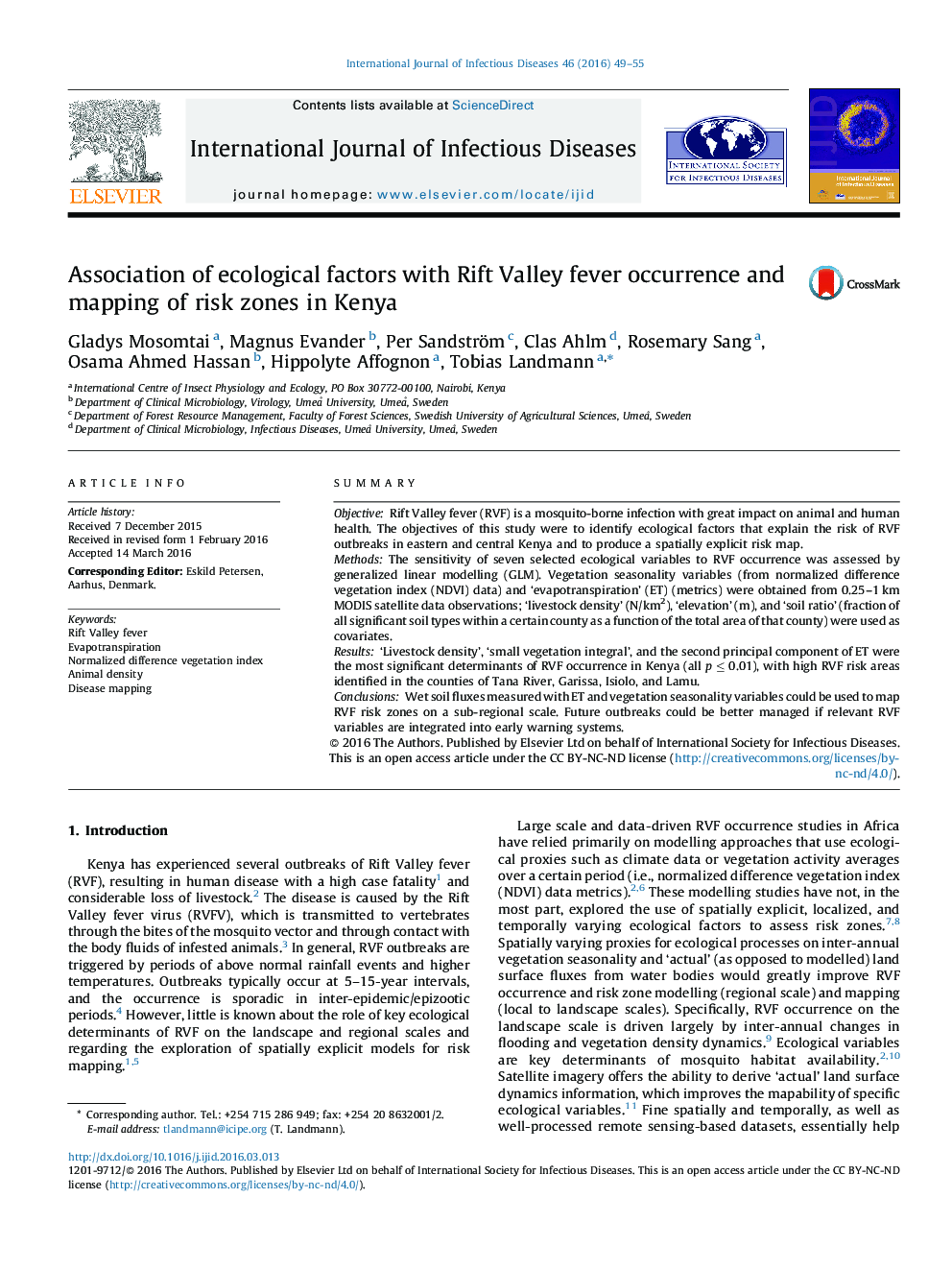| Article ID | Journal | Published Year | Pages | File Type |
|---|---|---|---|---|
| 3361652 | International Journal of Infectious Diseases | 2016 | 7 Pages |
•The first spatially explicit Rift Valley fever risk map was produced for a study region in Kenya.•Remote sensing-based variables contributed significantly to the mapping model.•Statistically based variable selection improved the meaningfulness of the mapping result.
SummaryObjectiveRift Valley fever (RVF) is a mosquito-borne infection with great impact on animal and human health. The objectives of this study were to identify ecological factors that explain the risk of RVF outbreaks in eastern and central Kenya and to produce a spatially explicit risk map.MethodsThe sensitivity of seven selected ecological variables to RVF occurrence was assessed by generalized linear modelling (GLM). Vegetation seasonality variables (from normalized difference vegetation index (NDVI) data) and ‘evapotranspiration’ (ET) (metrics) were obtained from 0.25–1 km MODIS satellite data observations; ‘livestock density’ (N/km2), ‘elevation’ (m), and ‘soil ratio’ (fraction of all significant soil types within a certain county as a function of the total area of that county) were used as covariates.Results‘Livestock density’, ‘small vegetation integral’, and the second principal component of ET were the most significant determinants of RVF occurrence in Kenya (all p ≤ 0.01), with high RVF risk areas identified in the counties of Tana River, Garissa, Isiolo, and Lamu.ConclusionsWet soil fluxes measured with ET and vegetation seasonality variables could be used to map RVF risk zones on a sub-regional scale. Future outbreaks could be better managed if relevant RVF variables are integrated into early warning systems.
Graphical abstractFigure optionsDownload full-size imageDownload high-quality image (143 K)Download as PowerPoint slide
